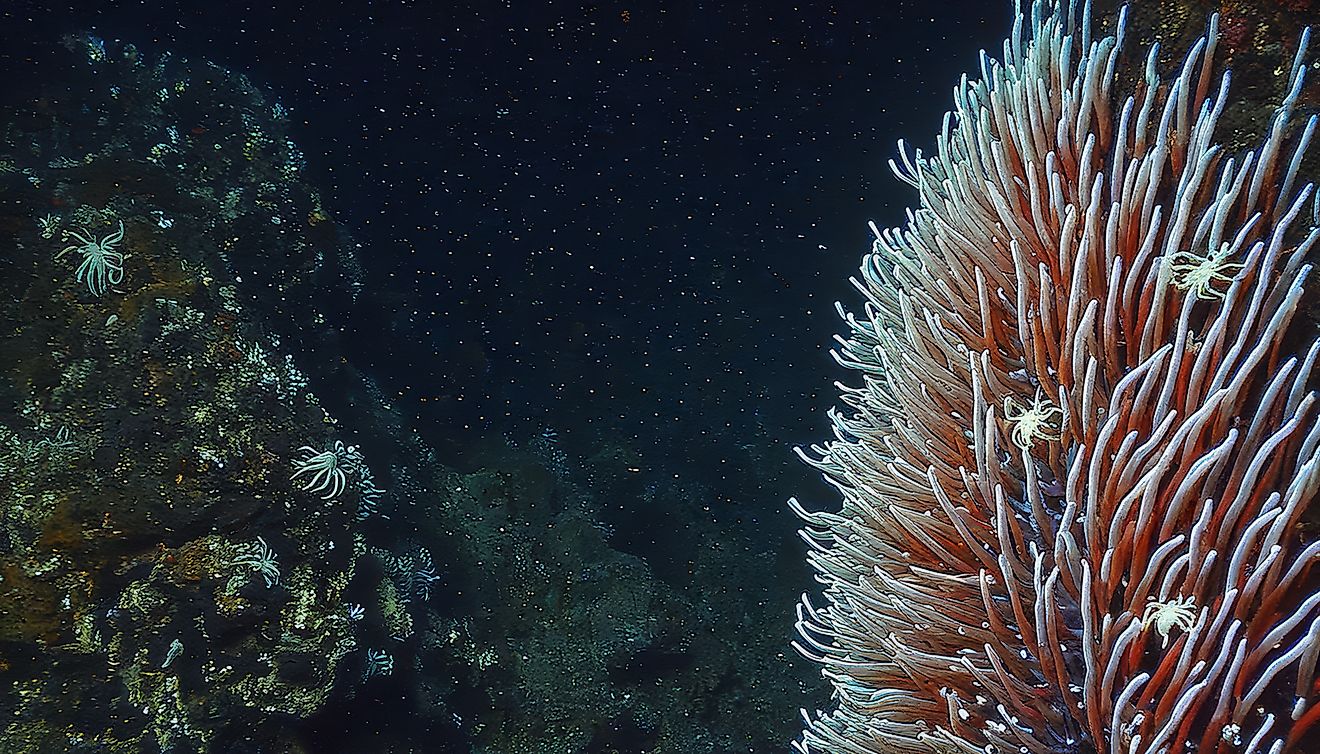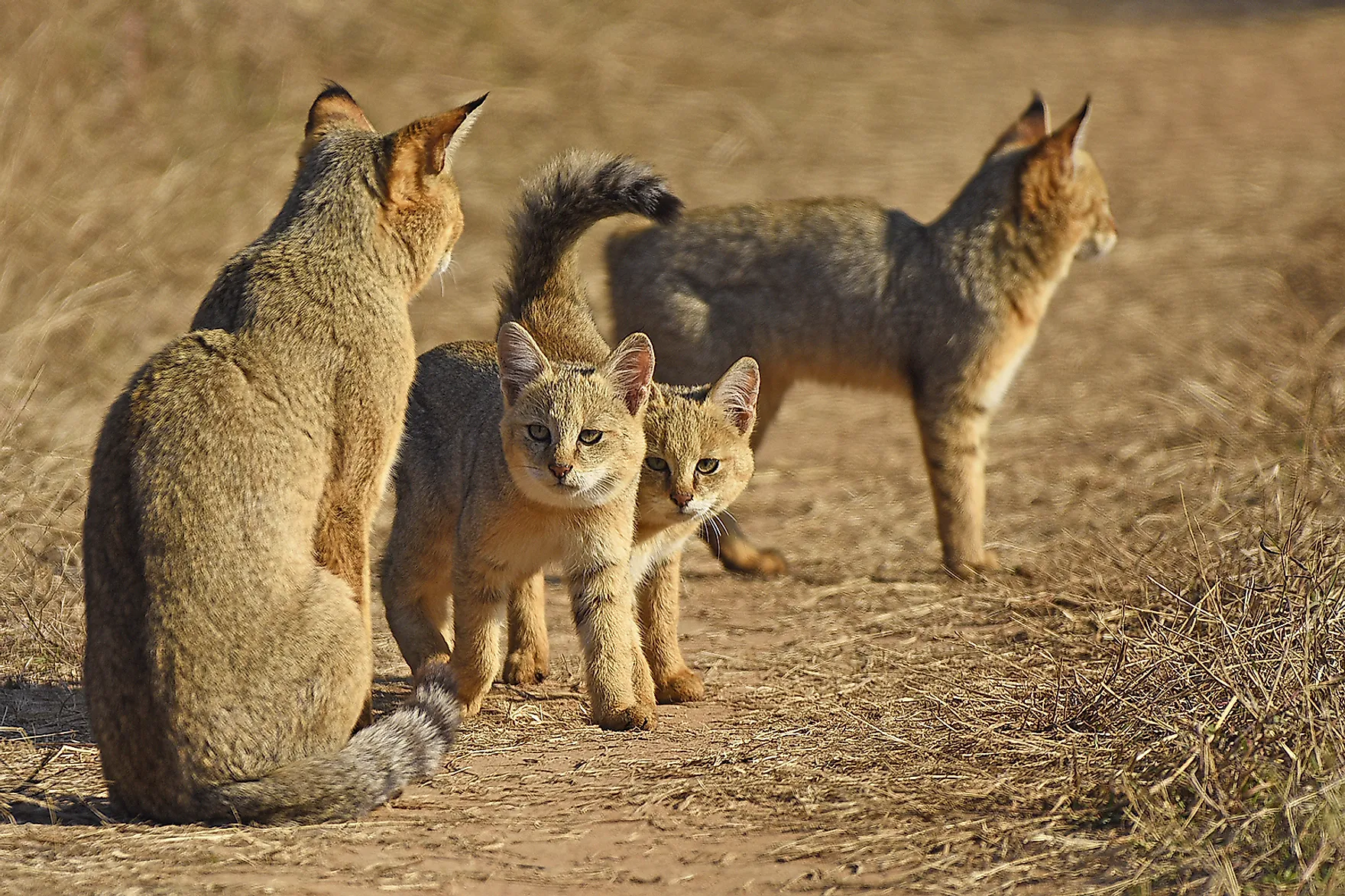
Jungle Cat
Not to be ignored for its small size, this feisty cat of the wilds has it all to reign in its kingdom that spreads across 30 countries. Behind the jungle cat's adorable appearance hides a fierce predator designed by nature to perfect the skill of hunting. Not only is the elusive jungle cat a prized sighting for the cat-loving wildlifers of the present-day, but it also finds mention in ancient art, literature, and folklore of cultures across its range. In Egypt, mummified jungle cats have also been discovered in ancient tombs, highlighting the significance of the species in the lives of ancient Egyptians.

Range And Habitat Of The Jungle Cat
The range of the jungle cat (Felis chaus) spreads from Egypt in North Africa to parts of the Middle East and Central Asia and throughout the Indian Subcontinent to parts of China and Southeast Asia. It is found at altitudes ranging from sea level to around 4,000 meters.
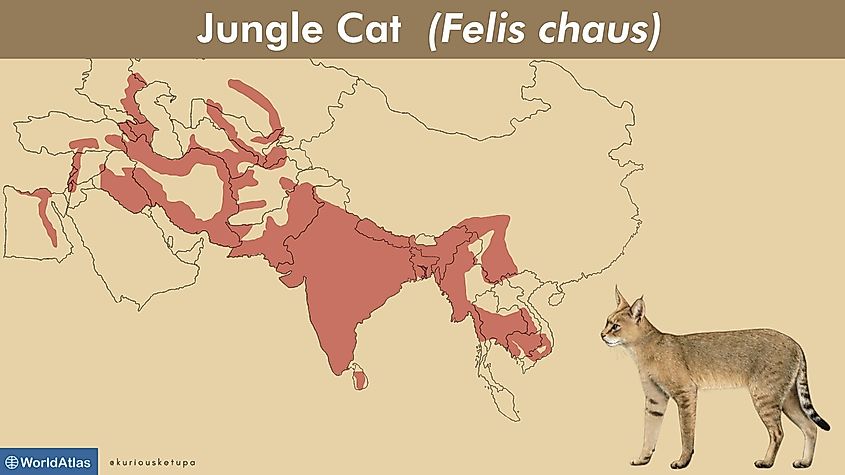
Also, although it carries the word "jungle" in its name, this gorgeous little beauty can thrive in various ecosystems like tropical deciduous forests, wetlands, savanna, grasslands, shrublands, deserts, and even agricultural lands like sugarcane plantations. However, this species prefers wetlands like reed swamps and wet marshes with plenty of vegetation to act as cover for hunting, giving it its other names like "swamp cat" and "reed cat."
Food Habits Of The Jungle Cat
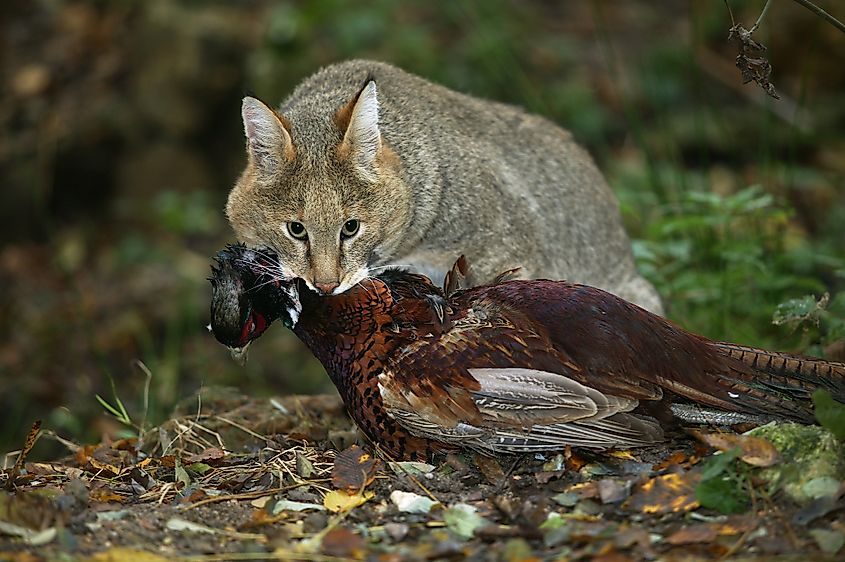
The jungle cat has a highly varied diet. While rodents like rats and mice are its favorite catch, it also hunts birds, frogs, snakes, lizards, insects, and even young ones of larger mammals like wild pigs and gazelles. Its prey usually weighs less than a kilogram. To catch its prey, the jungle cat does some real hard work. It stalks its prey while hiding its perfectly camouflaged body in tall grasses, bushes, or shrubs and then pounces on the prey following a short spring or leap. It can also catch low-flying birds by performing a leap into the air. Its excellent climbing and swimming abilities are also a great help in catching prey on the trees or in the water. This clever cat also takes domestic animals like poultry where it lives near humans.
Behavior And Reproduction In Jungle Cats
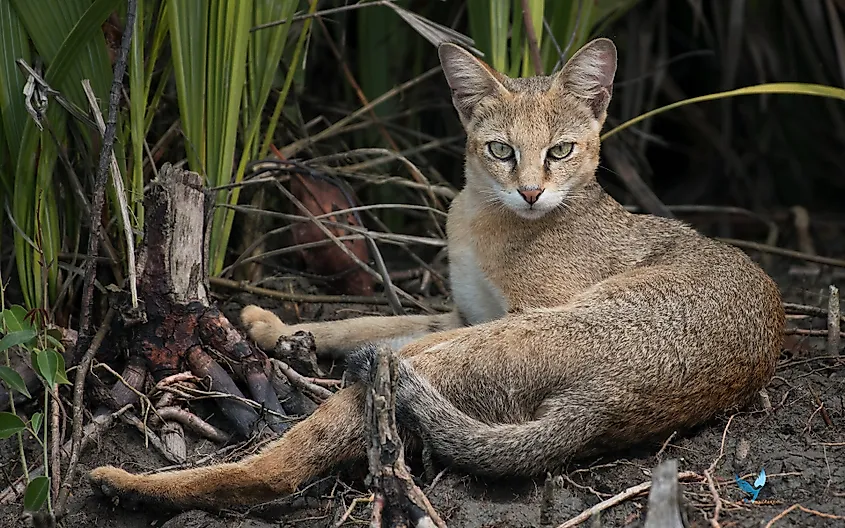
Like most cat species, the jungle cat enjoys a solitary living except when it mates and raises kittens. Although it is active throughout the day, it also rests a lot when not hunting in places that shelter it from predators and rough weather like burrows of other animals, caves, grass thickets, etc. The jungle cat uses scent marking like urine spraying to alert other jungle cats of its presence in its territory.
The breeding season of the species varies with its vast geographic range. Its mating behavior is quite similar to that of the kitties in our homes. Males often put up a fight for their desired female. After mating, the female gets busy finding the perfect place to hide her kittens from predators. One to five kittens are born per litter, and the female usually raises two litters a year. Born blind, the kittens are highly susceptible to the elements of nature and fierce predators. Their eyes open around ten days after birth, and by the age of three months, they are fully weaned. By the age of 8 to 9 months, the kittens are ready to leave their mother and face the world on their own. Their lifespan is usually 15 to 20 years in captivity but expectedly lesser in the wild due to the large number of threats to which they are exposed.
Importance Of The Jungle Cat
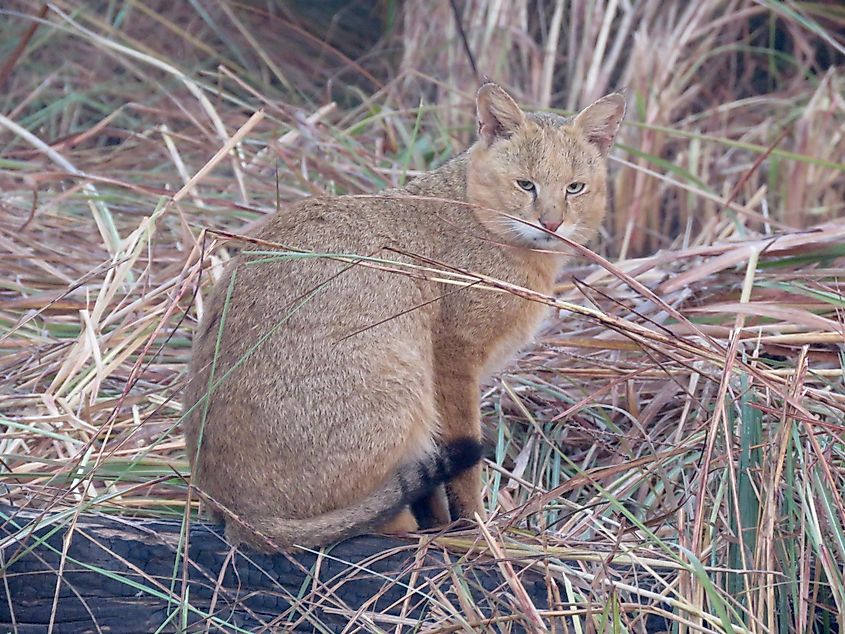
Every species in nature plays a role in keeping the ecosystem functioning smoothly, and the jungle cat is no exception. It keeps the populations of its prey species in check, and itself acts as food for higher predators like jackals, leopards, etc. It also acts as a pest controller in agricultural fields, helping save crops and thus benefitting humans.
Threats To The Jungle Cat
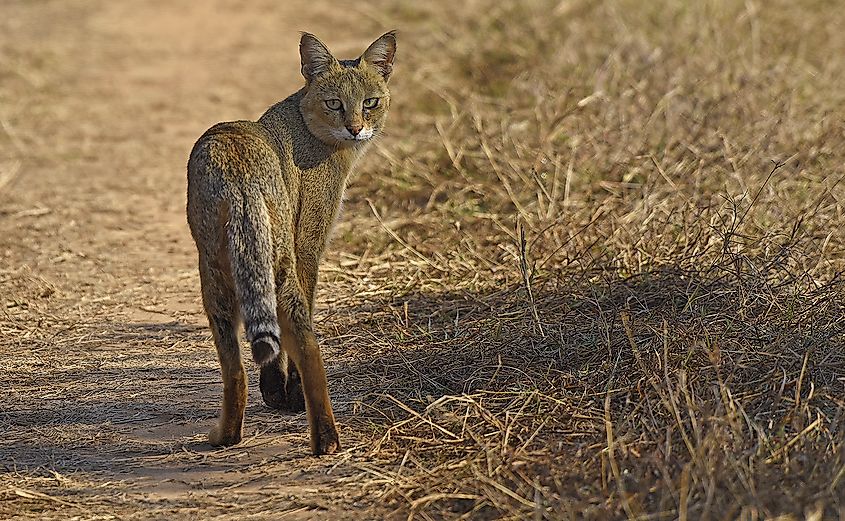
The jungle cat's ability to adapt to a variety of habitats and prey species has allowed it to maintain stable populations in some parts of its range, unlike many other cat species whose numbers are plummeting alarmingly. Hence, it is listed as a species of "Least Concern" on the IUCN Red List. But that does not mean that the jungle cat's future is all secure. Given the wanton destruction of habitats across its range, the jungle cat's survival might be adversely affected in the coming times. With few studies concentrating on this species, little is known about its current population status. However, India has managed to conserve this species fairly well, and so has Nepal, while in many other countries, sightings of the species have become rarer over time.
Thus, it is pretty understandable that without checking the destruction of wild habitats and other anthropogenic threats, even highly resilient species like the jungle cat face a bleak future.
